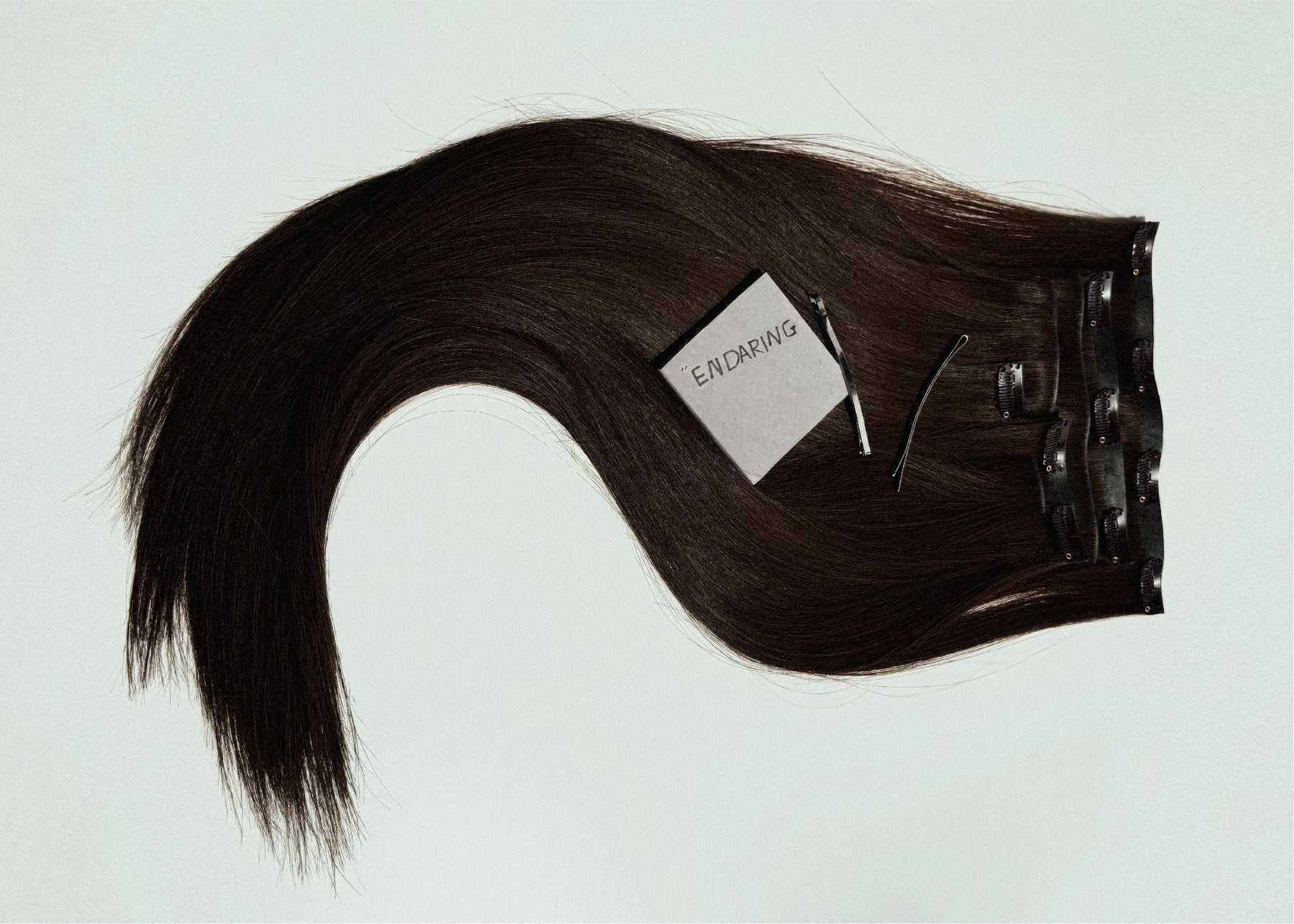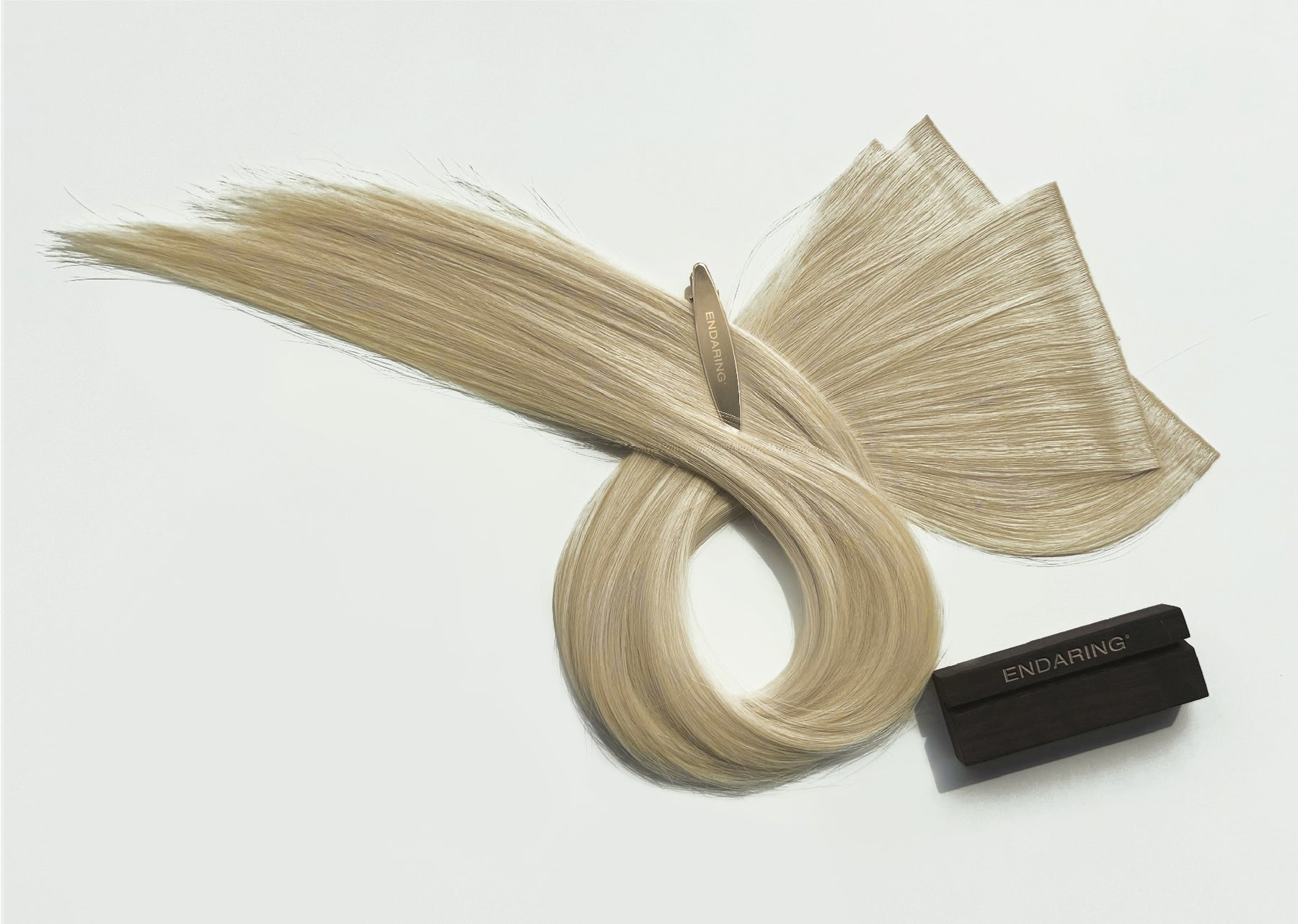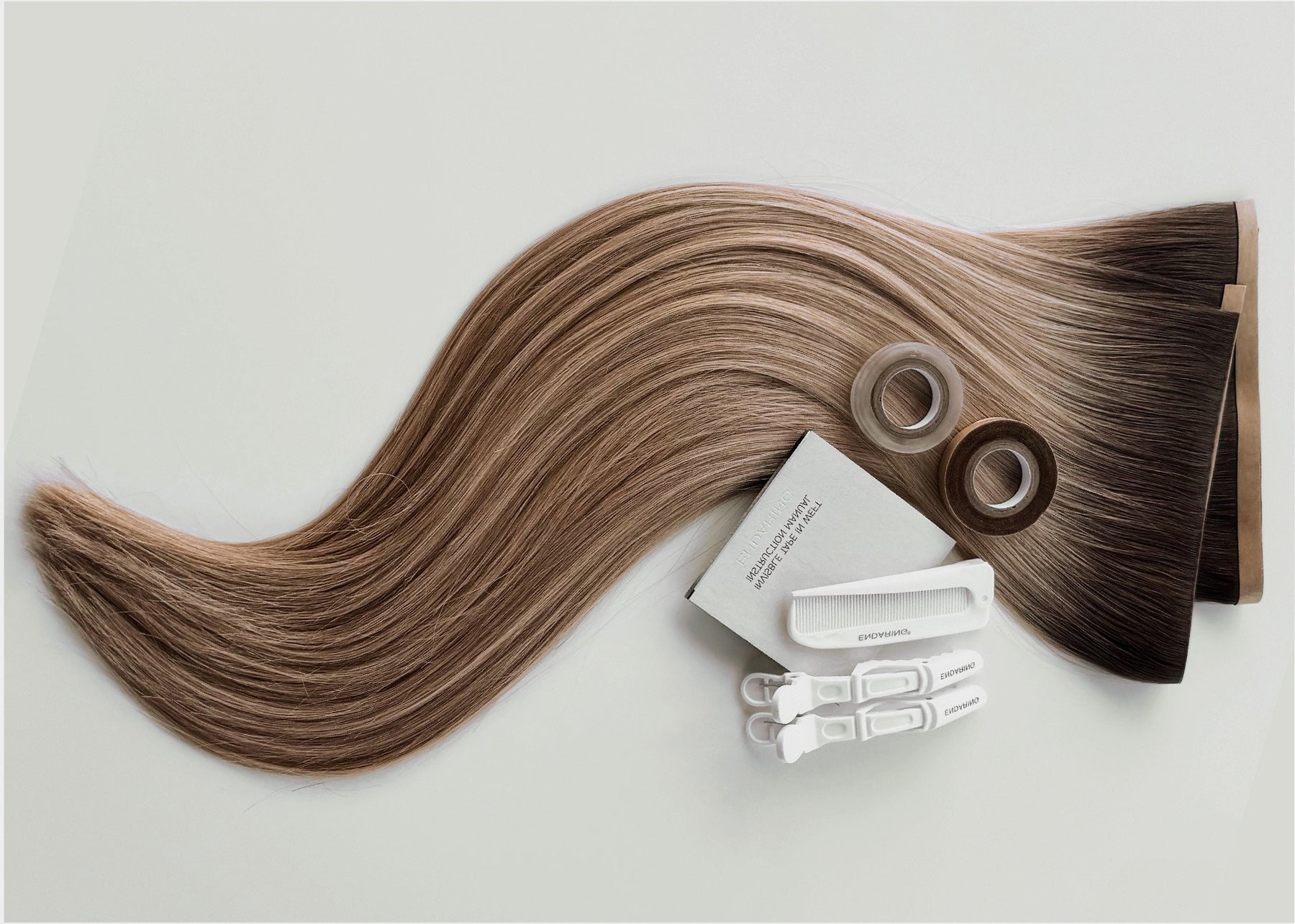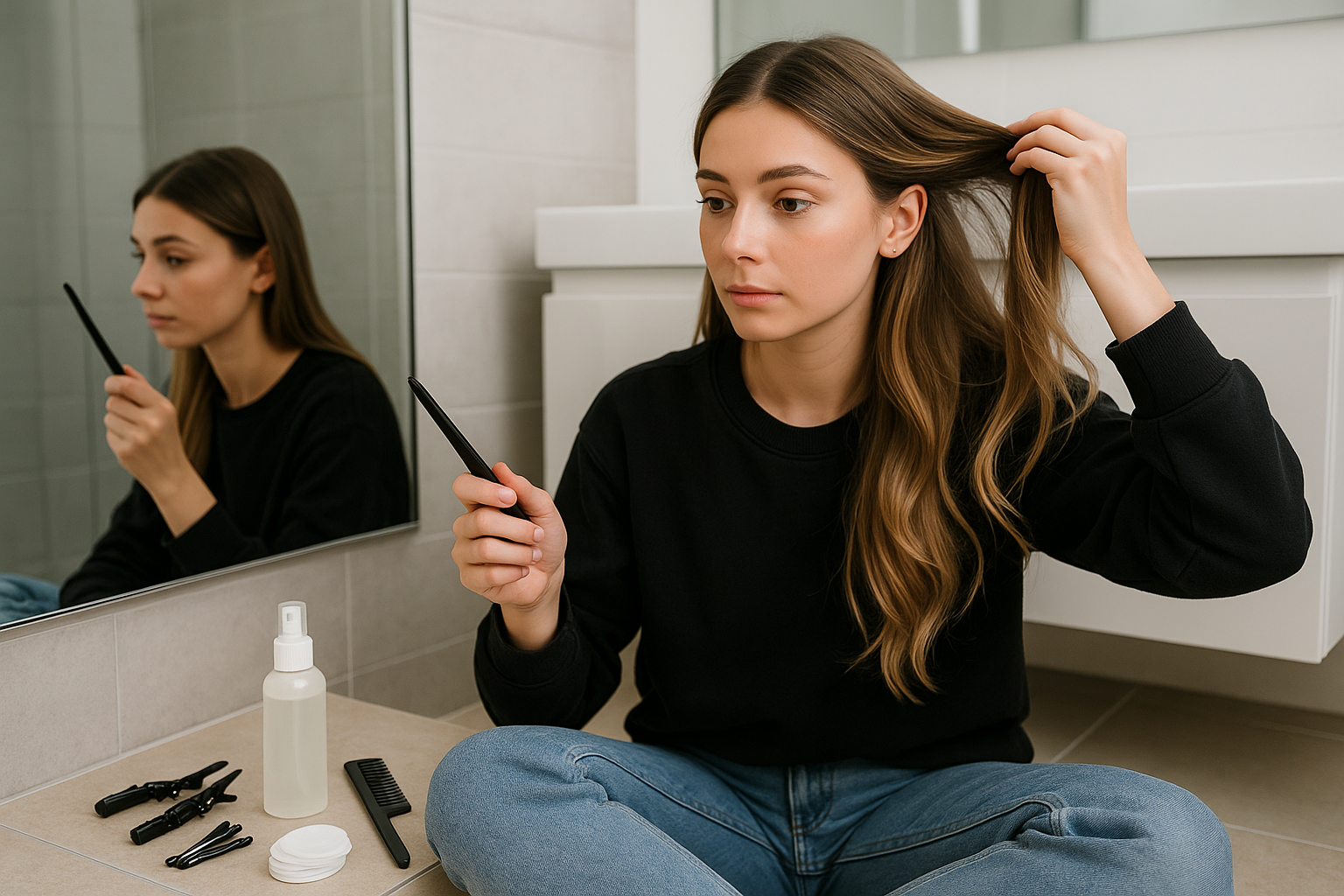When I first started wearing tape-in weft extensions, I had no idea how much of a difference daily habits could make. The truth is, these extensions aren’t high-maintenance divas—but they do need a little thoughtful care to stay secure and look natural. Over time, I built a simple routine that keeps my bonds clean, my ends soft, and my hair looking fresh day after day. If you’re wondering how to care for tape in weft extensions at home, let me share the steps I personally follow.
1) How to Wash Tape In Weft Extensions Without Loosening the Bonds
I treat wash days like maintenance days. Before I even touch water, I detangle gently. I hold each section above the weft with one hand and glide a wide-tooth comb from the ends up. This quick step stops shed strands from wrapping around the tapes and forming little dread-like knots later. I wash every 2–4 days depending on sweat, scalp oil, and styling products. Frequent heavy washing shortens the bond’s life; too little washing lets oils creep into the tapes. I aim for a balanced rhythm.
I keep the water lukewarm. Hot water swells the adhesive area and makes the tapes soften. I tilt my head back and let the water run down so I don’t flip all my hair forward and stress the bonds. I choose a sulfate-free shampoo and I work it on my scalp with my fingertips, never my nails. I focus on the skin between the rows and the hair just above the tapes. I don’t scrub directly over the seams because friction weakens the attachment over time.
I rinse thoroughly, then use conditioner only from mid-lengths to ends. Oils and slip agents near the seam encourage sliding, so I leave a two-finger buffer above the tapes. If my ends feel extra dry, I add a lightweight, silicone-based conditioner on the bottom half only. Silicones give slip and shine on the lengths, but I keep them away from the bonds. Once or twice a month I reach for a gentle clarifying or chelating shampoo to remove product, hard-water minerals, and sweat salts—but I still baby the seam area and chase with a hydrating conditioner on the ends.
After rinsing, I do a final quick check with my fingers along the rows. If I feel residue near the seam, I rinse again. That tiny habit keeps build-up from creeping under the adhesive. Everything I do in the shower answers one question: does this help my bonds stay clean and dry while keeping my ends soft? That mindset keeps me on track with how to care for tape in weft extensions long term.
2) Drying Tape In Weft Extensions the Right Way at Home
I never rough-towel my hair. I squeeze out water gently, then wrap it in a microfiber towel or a soft cotton T-shirt. The fabric soaks up moisture without snagging the rows. I unwrap after a few minutes and separate the hair with my fingers, so air can move through the sections.
I always dry the root area first. Moisture around the tapes equals slip, so I point my blow-dryer’s nozzle at the seam and keep it on medium heat and medium airflow. I use my fingers like a comb to lift the hair and keep the air moving. Once the bonds feel dry to the touch, I switch to a brush and finish the lengths. If I want to air-dry the ends, I still lock the bonds dry first; I never go to bed with damp roots.
If I wear curls or waves, I set the dryer to medium heat and let the nozzle do the work—no tugging on the wefts. I finish with a cool shot to smooth the cuticle. If I need frizz control, I use a light, alcohol-free leave-in on the mid-lengths and ends only. I avoid heavy serums near the top because anything slick around the seam invites sliding. Simple rule I follow: dry the bonds first, style the lengths second, keep slip agents far from the seams.
3) How to Brush Tape In Weft Extensions to Prevent Tangling
I treat brushing like preventative care. I keep a loop brush or a flexible detangling brush on hand, plus a wide-tooth comb for the shower. Morning, midday, and before bed, I run through my hair to stop small knots from turning into mats. I hold above each weft with one hand and brush with the other, so I never pull directly on the tapes. I start at the ends, then move to mid-lengths, then glide over the top. That simple sequence saves bonds and saves time.
When I hit a knot, I don’t yank. I mist a light detangler on the area (avoiding the first two inches near the seam) and pinch the knot with my fingers while I pick it apart from the bottom. Sweat days, windy days, and scarf days demand extra brushing—friction builds micro-tangles fast. After workouts, I cool the scalp, then brush to release salt and loosened hairs that like to collect around the rows.
I also set my hair up to succeed. If I wear high collars or coats, I pull the hair forward and brush more often because fabric rubs the nape and encourages matting. If I love a sleek pony, I keep it low and loose to avoid constant tension on the tapes. A few mindful strokes during the day feel small, but they decide how long my hair stays smooth and how well my rows stay comfortable. When I think about how to care for tape in weft extensions, I think “little and often” with brushing.
4) Heat Styling Tips: How to Care for Tape In Weft Extensions When Using Tools
I treat heat as a tool, not a habit. I set my iron to the lowest temperature that holds a curl: around 300–320°F (150–160°C). I never clamp hot plates over the tape seam; I keep tools at least a half-inch away from the bond. I work in small sections, so I need fewer passes, and I let each curl cool in my palm before I touch it. Cooling locks in shape without extra heat.
I prime the lengths with a lightweight, heat-protectant spray and keep it from the root area. I avoid oil-heavy serums before hot tools because oils cook on the surface and dull shine. If I want shine, I add a tiny amount after styling on the ends only. For curls, I hold the iron vertically and wrap away from my face, leaving the first inch near the seam straight, so the row lies flat. For straightening, I chase the iron with a comb, again steering clear of the bonds.
To finish, I choose flexible hold. I lightly mist a brush or my hands with hairspray and smooth the surface rather than blasting the roots. Salt sprays, strong alcohol sprays, and wet gels near the top dry the area and can mess with the adhesive, so I keep those on the mids and ends—or skip them. I stretch styles with a silk scarf at night, so I style less often. Smart heat, smart placement, and smart finishing give me the look I want without shortening the life of my tapes.
5) Sleeping Habits: How to Care for Tape In Weft Extensions Overnight
I never sleep on wet hair. I make sure the bonds feel bone-dry before I climb into bed. I give my hair a gentle brush, then choose a low-friction setup: a loose three-strand braid, two low pigtail braids, or a low pony secured with a silk scrunchie. Tight topknots create constant tension on the seams, so I skip them. My goal at night is simple—limit friction and eliminate tugging.
I sleep on a silk or satin pillowcase because the fabric cuts down on rubbing and keeps the cuticle smooth. If I move a lot, I add a silk bonnet to lock everything in place. I keep leave-in products light and only on the ends before bed; heavy creams near the roots travel while I sleep and creep into the bonds. If I wake up with any tangles, I hold above the row, mist a little detangler on the mid-lengths and ends, and work from the bottom up.
On sweaty nights or hot seasons, I pull a fan across the room to keep my scalp cool and dry. Sweat plus friction equals buildup, so I brush in the morning and, if needed, do a quick rinse that day with a small amount of shampoo focused on the scalp. Nighttime habits look boring, but they protect shine, comfort, and bond security. That’s the quiet secret behind how to care for tape in weft extensions for the long haul.




